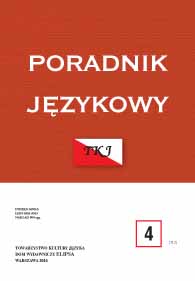NIE MA IJO HAKA, CZYLI O STRATEGICZNYCH ZACHOWANIACH MOWNYCH DZIECI
Nie ma ijo haka or about language strategies in children’s speech
Author(s): Anna ŻurekSubject(s): Language and Literature Studies
Published by: Dom Wydawniczy ELIPSA
Summary/Abstract: The research perspective assumed in this study is derived from the theory of second language teaching and learning (L2 T/L), in which the dichotomy between learning strategies (including but not limited to cognitive strategies) and communicative strategies is an object of a heated debate. The notion of interlanguage introduced by Selinker [1972] was used for the purpose of research on fi rst language acquisition. Two types of strategies applied by preschool children are described in this study on the basis of the collected empirical data. These are cognitive and communicative strategies. The former group of strategies is oriented directly towards the linguistic knowledge acquisition process and comprises the following phenomena: overgeneralisation, application of prefabricated linguistic patterns, replacement of one linguistic structure with another, paraphrase, multiple repetition, formation of new words and structures. The latter, in turn, supports interpersonal communication through making attempts to interact despite linguistic defi cits. They were divided into risk strategies (i.e. multiple repetition, asking another person for help, self-correction, and non-verbal communication) and avoidance strategies (phonological, lexical and semantic avoidance, change of subject and conversational avoidance). Adapting the theory of language learning and communication strategies to the research on child speech seems interesting and innovative since no systematic studies have occurred in Polish literature to date.
Journal: Poradnik Językowy
- Issue Year: 2014
- Issue No: 04
- Page Range: 7-20
- Page Count: 14
- Language: Polish
- Content File-PDF

